Decentraland Review: Virtual Reality World on the Blockchain
Those with a passion for blockchain technology and gaming have been very excited over the development and launch of a decentralized online VR gaming platform called Decentraland. We covered this project back in 2018 when it was still very much in its infancy. Now it’s launched and live, and while not all grown up, it could be considered to be maybe in its adolescence, with all the awkwardness that brings.
The following review will introduce Decentraland and discuss how it works and what you might be able to do with it. We’ll also discuss the native MANA token, and look into the state of the VR game as of March 2021. Let’s get to it.
What Is Decentraland?
As mentioned above, Decentralland is a decentralized, online VR world similar to Second Life. The big difference with Decentraland is that it runs on the blockchain. It is powered by Ethereum and was created to support the creation, development, hosting, and sales of virtual property.
Decentraland allows its users to purchase virtual property and then develop them as an online, virtual business. There are a number of different buildings or attractions that can be built on the plots of virtual land, and those can then be monetized or simply sold to others for a profit.
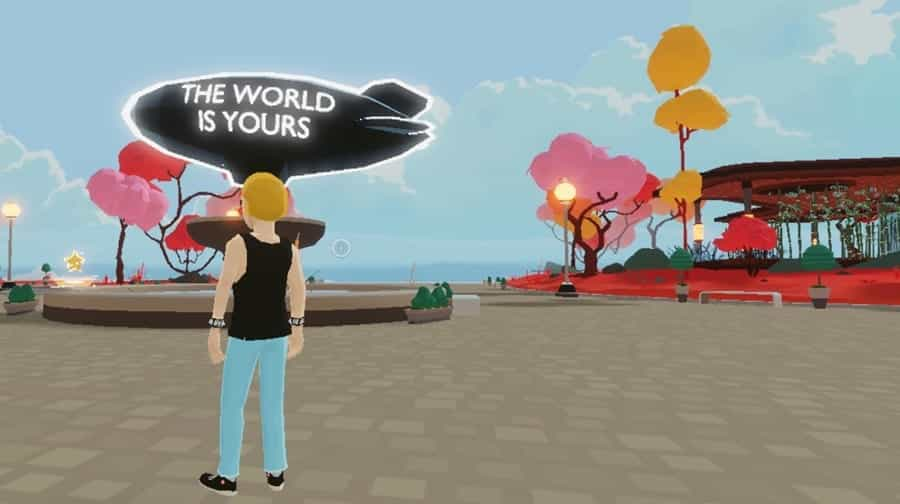
The project was conceptualized and developed by two blockchain experts. These two, Ari Meilich and Esteban Ordano, spent several years developing the blockchain and the smart contracts that run Decentraland. They were able to launch the mainnet in 2020 and then they both stepped back into an advisory role, allowing the Decentraland Foundation and the decentralized autonomous organization (DAO) provide the way forward for Decentraland.
How Does Dectraland Work?
On the visible level Decentrland works by allowing players to interact with the non-fungible assets known as LAND on the platform. These parcels of LAND, of which there are 90,000 in total, can be purchased and sold. More importantly, the owners of LAND are able to create on them. They can be used as the containers for games, applications, gambling services, creative 3D scenes, informative sites, literally, anything one can think of.
In addition to the number of LAND units being capped at 90,000 each one also has a defined size of 33 feet by 33 feet. Interestingly, while the length and width of each LAND is limited, there is no cap on the height of a LAND, so theoretically an owner could continue building higher forever.
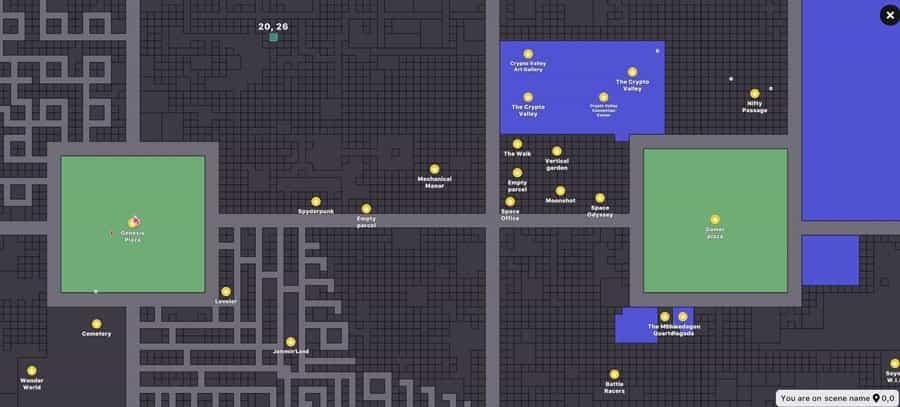
A collection of LANDs creates a district, which is basically a community sharing a similar theme (gambling, dragons, amusement park, pirates, etc.). MANA holders are able to vote on issues that affect these districts as part of the DAO governance of the project. The amount of held MANA determines the weight of the vote.
These MANA tokens are the power behind the platform. Everything is powered by MANA, the native cryptocurrency of Decentraland. MANA is an ERC-20 token and in addition to using it for governance it can also be used to purchase LAND or to buy any number of virtual assets and services within Decentraland.
Behind the scenes Decentraland is built in a similar manner to most blockchain projects. It has a protocol and that protocol has three layers. These are the consensus layer, the land content layer, and the real-time layer. The consensus layer is where the smart contracts that track and govern LAND ownership live.
The land content layer is responsible for rendering the content that you see when you enter Decentraland, and the real-time layer provides the peer-to-peer connections that are required for users to interact with one another.
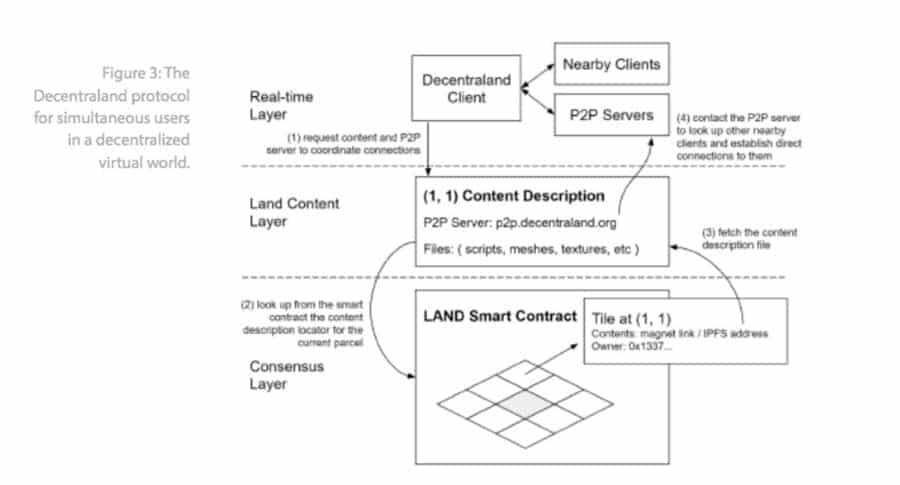
Decentraland’s History
Decentraland was formally launched and opened to the public on February 20, 2020. The DAO was implemented soon after, and since then development of the world has continued without the need for any centralized control. When it was launched it included three different native tokens.
There is the MANA token, which is an ERC-20 token that functions as the currency of Decentraland. Then there are two ERC-721 tokens which are LAND and Estate. Estate is simply a token that represents a collection of LAND. All the LAND and Estate tokens are NFTs. That is, they are unique digital assets recorded on the Ethereum blockchain.
If you are familiar with other virtual worlds (Second Life, World of Warcraft, and other MMORPGs) then you’ll be right at home in Decentraland as you experience the world in the form of an avatar. This avatar is used to navigate the world of Decentraland and experience all its digital destinations.
There are a number of things that the avatar can do, including buying art, trading with other Decentraland users, gamble in a casino, or attend the Decentraland University. New things are being added to Decentraland all the time and a good place to start when entering the world is to visit Genesis Plaza, where you can learn some of the basic workings and history of Decentraland.

Decentraland has continued to grow, evolve and expand in many different ways. You can learn about all the changes made to the world in 2020 from this post and keep up with all the new developments of Decentraland through their blog or by participating on their Discord channel.
MANA, LAND, and Estate Tokens
Before we take a closer look at how MANA fuels the virtual economy of Decentraland let’s review the differences between ERC-20 tokens like MANA and ERC-721 tokens like LAND and Estate.
The ERC-20 tokens, which MANA is, are considered to be fungible tokens. That is, they are fully interchangeable with one another. Any single MANA token is exactly the same as any other single MANA token. The tokens have no individual characteristics. This makes MANA an ideal currency for using in the virtual economy of Decentraland.
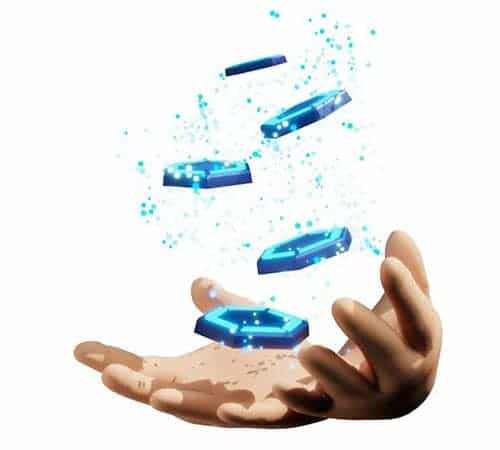
Then there are the ERC-721 tokens like LAND and Estate. These tokens are considered to be non-fungible because they have individual characteristics that make each token unique. Because of this these tokens are not interchangeable and are not suitable for use as a currency. They are however very useful in creating in-world items such as avatars, wearable items, and the unique parcels of land in Decntraland.
Decentraland was created with 90,000 LAND units (this could be increased by the DAO in the future) and all 90,000 were purchased during the initial Decentraland auction. Each LAND unit is 33 feet wide by 33 feet long, with an unlimited height. Adjacent LAND can be merged to create an Estate. Although all the LAND parcels were auctioned off it is still possible to purchase them using MANA in the Decentraland marketplace. You can also buy things like wearables or even a name for your avatar.
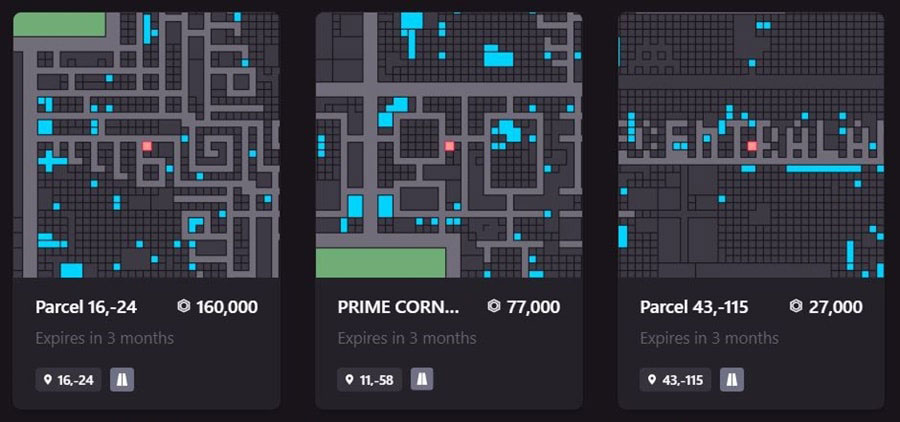
The characteristics that define MANA, LAND, and estate are set in three smart contracts. These are the MANAtoken contract, the LANDregistry contract, and the EstateRegistry contract. An interesting note is that the private key for the MANAtoken contract was destroyed by the founding team, which means no changes can ever be made to this contract.
All of the virtual space in Decentraland is composed of LAND, which are purchased by MANA and can be combined to make larger parcels known as Estates. You can also use your MANA to purchase wearables for your avatar such as shoes or hats or glasses. Each wearable item is an NFT, meaning each one is unique and ownership of the item will be recorded on the blockchain.
Owners of LAND are free to do whatever they like with it, creating digital environments or adding applications such as games of themed communities. These added pieces can then be monetized.
There are a number of blockchain companies (SuperRare, MakerDAO, Rarible, and others) that have purchased parcels of LAND and have created virtual galleries and offices in Decentraland. The world has also been used to host virtual conferences in the past and you can find out about live events in Decentraland (which are becoming more common) here.
Decentraland Key Features
As you might have already figured out, Decentraland seeks to create a decentralized free market economy in a virtual world through the use of immutable blockchain technology. Along with that come several key features that prospective “players” should be aware of:
Avatars
When you enter Decentraland you do so as a fully customizable avatar, or virtual representation of yourself. There are hundreds of free outfits to choose from, or you can spend some MANA to purchase unique clothing items and create an avatar with its own personality. Each avatar has a Decentraland passport, which connects to an Ethereum compatible wallet where all your MANA and items are recorded.
Builder
Once you own a parcel of LAND in Decentraland you can become a builder, adding scenes or entire environments to the LAND. No coding is necessary since Decentraland comes with a large pool of pre-built scenes that can be applied to any LAND.
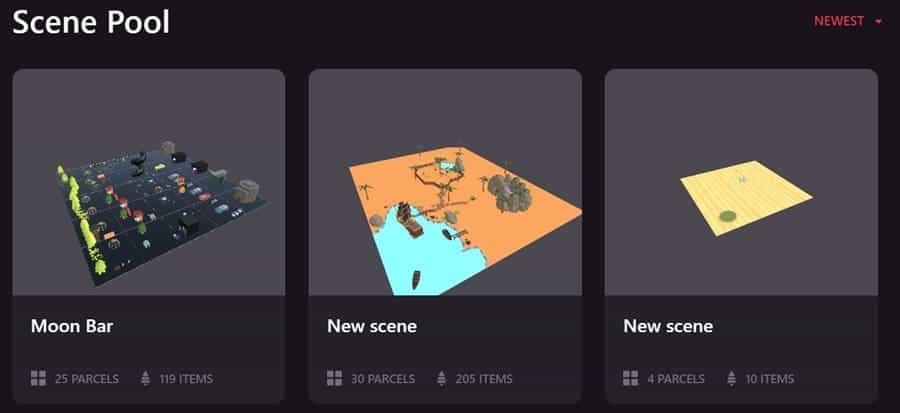
These have all been contributed by others thanks to the open source technology used by Decentraland. As of March 2021 you’ll find thousands of scenes to choose from which include the most basic rough drafts to fully developed forests, building, and even villas.
Marketplace
If you can’t do your own development, and you don’t want to use the free items available, you can always head over to the Decentraland marketplace and purchase anything from a pair of sunglasses for your avatar to a complete Estate. The trading of LAND and Estates was among the very first use cases proposed for Decentraland when it was in development. You can also go to the marketplace to purchase a name, or to purchase various wearable items.
Decentralized Autonomous Organization (DAO)
Shortly after Decentraland went live to the public its control was handed over to the actual users in the form of a Decentralized Autonomous Organization (DAO). This further reinforces the free economy nature of the platform and allows the actual users to make changes that enhance the virtual world.
The Decentraland DAO owns the most important smart contracts and assets that make up Decentraland – the LAND Contract, the Estates Contract, Wearables, Content Servers and the Marketplace. It also owns a substantial purse of MANA (222 million to be vested over 10 years) which allows it to be truly autonomous as well as subsidize various operations and initiatives throughout Decentraland.
Decentraland’s Governance
Most virtual worlds developed up to this point are centralized and controlled by the company that created them. Decentraland differs because it is fully decentralized and is controlled by the holders of MANA tokens through the Decentraland DAO. This DAO was created using the technology provided by Aragon.
Holders of MANA, LAND, and Estate can vote on proposals through the governance interface. Each MANA token provides 1 unit of voting power, and each LAND and Estate token provides 2,000 units of voting power. Thus the more tokens you hold the greater your voting power in the DAO.
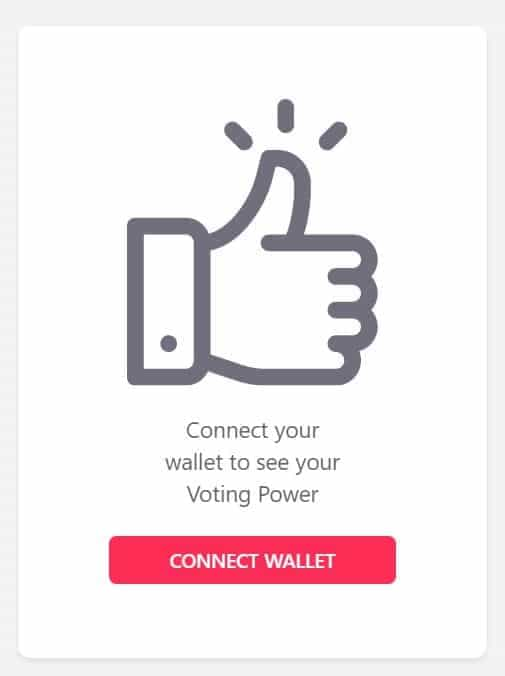
In order to use your MANA for voting it needs to be wrapped, creating wMANA. This locks the MANA and while it is locked or wrapped, it cannot be transferred or spent. You can unwrap or unlock your wMANA at any time after which it can be spent or transferred. To use the voting power of LAND and Estate tokens they need to be registered with the DAO but they do not need to be wrapped or locked.
They can be used normally after being registered. MANA can easily be purchased on a number of cryptocurrency exchanges, but to purchase LAND you must have MANA and use the Decentraland Marketplace. Estate tokens are created from merged LAND tokens and can be purchased or created by purchasing two or more adjacent LAND tokens.
In addition to the DAO there is a Security Advisory Board (SAB) at Decentraland that oversees the security of the smart contracts on the platform. It is also responsible for reviewing governance proposals until such time that fraud risk is reduced to the minimum amount possible.
The SAB is comprised of five individuals who are voted into place by the Decentraland community. As part of the proposal review process the SAB has the power to delay or reject any governance proposals if they deem it to potentially have a negative impact on Decentraland.
Decentraland is paving the way for a whole new collection of virtual worlds governed by their users. These new worlds will feature ownership of the value being created in the virtual world, with the ability to transfer that tangible value back to the real world that you live in. Plus, Decentraland could allow users to participate in a whole host of activities, from racing cars to fighting dragons, or becoming a landlord or trade merchant, and profit from all of them. This makes Decentraland far more than just another MMORPG.
The Decentraland Team
Decentraland was developed by founders AriMeilich and Esteban Ordano. Both the founders were previously involved in other successful blockchain projects such as Streamium and Bitcore. Streamium is a decentralized trustless video streaming using Bitcoin payment channels. Bitcore is a full stack for Bitcoin and blockchain-based applications.
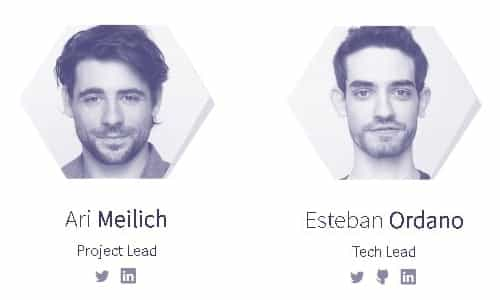
Ari’s previous experiences include being the co-founder of Benchrise, a customer relationship management tool to find and engage with top talent based on their latest projects, interests and mutual connections. He has also worked as a market research analyst for CRV, a VC and private equity firm. Ari graduated with a degree in Neuro-science and Neuro-Economics from NYU.
Esteban was previously the founder of Zeppelin Solutions, which builds software to grow and protect the core infrastructure of an open, global economy, powered by blockchain technologies. Prior to that, he was a software engineer at Bitpay and Google.
As of April 2020 both founders have stepped back into an advisory role at Decentraland, allowing the DAO and the Decentraland Foundation take over the governance and development of the platform.

The Decentraland Foundation (the “Foundation”), acting for the benefit of the Decentraland community as a whole, holds the intellectual property rights over, and makes available, the DCL Client, the SDK 5.0, the Marketplace, the Builder, the Blog, Events, Agora, Forum, the Land Manager, the Command Line Interface, DAO, and the Developers’ Hub.
The Foundation makes available the Tools and the Site free of charge in order to allow different interactions with the Decentraland platform (“Decentraland”), a decentralized virtual world. The Foundation does not own Decentraland, as ownership is decentralized on the community.
The MANA Token
Decentraland conducted an ICO that raised $24 million in just 35 seconds. That ICO was held back on August 8, 2017 and was one of the most successful ICOs of its time. There were roughly 10,000 investors who attempted to participate in the sale, but due to the heavy volumes there were almost 7,000 who never had their transactions go through, and as a result they were disappointed to find that they did not be come early owners of MANA tokens.
At the ICO 1,000 MANA were sold for just $24 and each 1,000 MANA could be used to purchase 1 LAND. As you’ll soon see this has changed massively in the nearly four years since the ICO.
When MANA was released and traded on exchanges it was priced at $0.02. It rose rapidly and by January 2018 hit a peak of $0.26. It dropped off its peak and settled into a trading range of $0.07 to $0.11. It began a slow retreat and by mid-2020 was trading below $0.04.
It took off from there however, doubling and remaining around the $0.08 to $0.09 level for the remainder of 2020. Heading into 2021 the token took off along with the entire crypto market, and hit an all-time high of $1.19 on March 14, 2021.
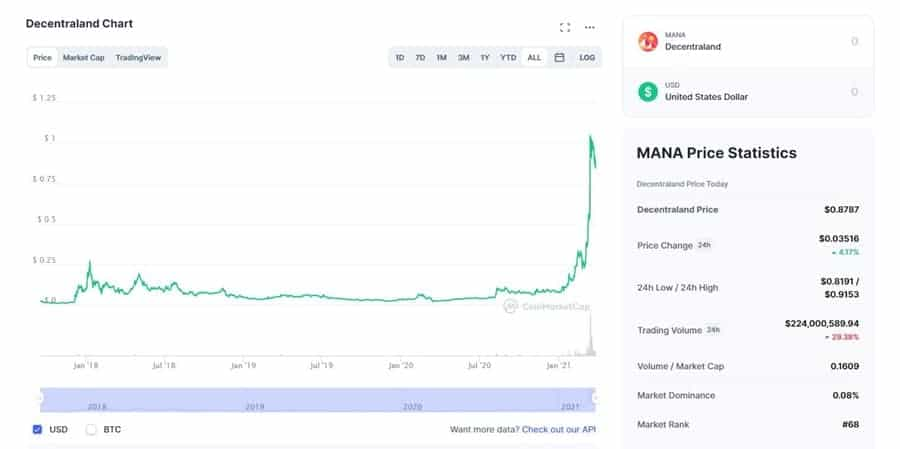
Since then it has retreated, but remains around $0.85 as of March 26, 2021.
As an ERC-20 token MANA can be stored in any Ethereum compatible wallet, although MetaMask is recommended for connecting to the Decentraland platform. MANA tokens can be purchased from a huge number of exchanges, with the largest volumes seen on Binance and Coinbase Pro.
Getting Started with Decentraland
While there are many things you can buy in Decentraland using MANA you don’t need a single token to enter the world of Decentraland and start exploring. It’s a web-based platform that you can access by pointing your browser to Play Decentraland.
It will ask to connect your wallet, so if you don’t already have MetaMask (or you can use Fortmatic) installed as a browser extension you’ll want to do so now. Or you can explore without a wallet, but know that everything you do during the session will only be stored locally on your machine. Also note that Decentraland does not support mobile devices yet, although it’s pretty certain that will be coming in the future.
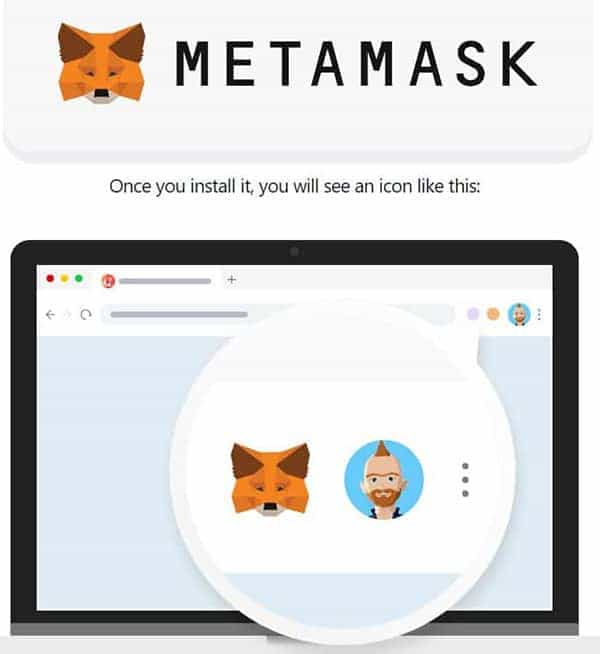
So, once you’re at the Play Decentraland site and you’ve connected your wallet (if you choose) it’s time to click the “Play” button and enter the world.
If this is your first visit the first thing you’ll need to do is create your avatar. It’s a quick and easy process and there are plenty of customization options to play with. Once that’s done you’ll be asked to agree to the Decentraland Terms & Conditions and you’ll be standing in Gemini Plaza.
There’s a small flying robot named Alice who will explain the basics of getting about in Decentraland, but if you’ve ever played any online MMORPGs or first person shooter games you’ll be familiar with the W,A,S, D controls for movement, the mouse for controlling the camera angles, and the spacebar for jumping. Plus you can switch between first person and third person views by pressing ‘V’. There are a few other basic controls, but I’ll let you find out for yourself.
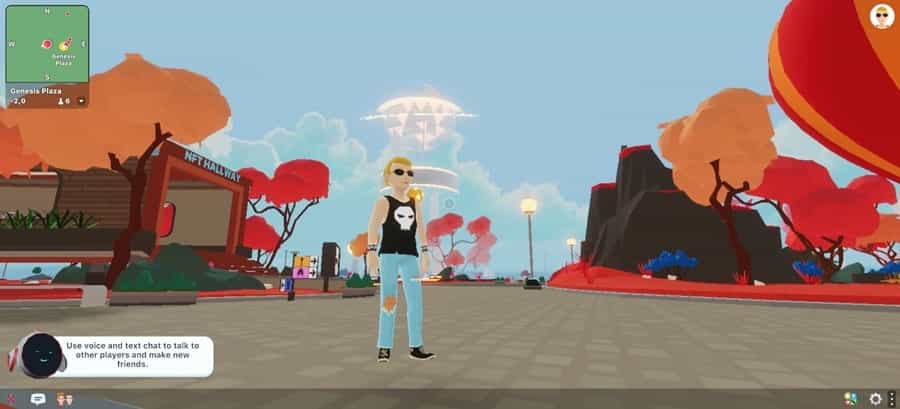
Wandering about is interesting and you’re likely to stumble across some fun constructions, but to really take advantage of Decentraland you’ll need to get some MANA. The one downside is that MANA is comparatively quite expensive right now. Another is that since Decentraland runs on the Ethereum network transactions and gas fees are very expensive.
Conclusion
There’s no denying that Decentraland is a very exciting and unique project within the blockchain ecosystem. It will no doubt set the tone for any new online virtual reality games that come about in the future, including any 3D/VR systems or alternate life dApps. In some ways it reminds me of the online Entropia Universe (without the shooting), but it is superior in that it is decentralized and owned by the actual players, who can use the universe to create whatever they like.
And yet there’s also the biggest complaint about Decentraland. The extremely high gas fees make playing problematic. Wearables are a fun way to customize your avatar, but not if you have to pay $60 in gas fees. The marketplace for wearables also needs a dose of reality. There’s no way that any virtual pants, shirts, shoes or whatever are worth several thousand dollars worth of MANA.
I can only presume that with more adoption the prices will come down on the wearables, because otherwise I don’t believe adoption will last very long.
It will also be good to see more interactive parts being added to Decentraland. Currently the world feels very much like a place for tourist to go and look about, but it is very short on possible actions. It is also quite a lonely place in some ways since you can wander about for hours without seeing another soul.
Overall I can say I enjoyed my brief visit to Decentraland, and I know I only scratched the surface of what’s available. There is likely enough depth there to keep anyone busy for some time, and it’s very cool knowing that the entire universe is being powered by the Ethereum network.
Disclaimer: These are the writer’s opinions and should not be considered investment advice. Readers should do their own research.
Disclaimer: These are the writer’s opinions and should not be considered investment advice. Readers should do their own research.
